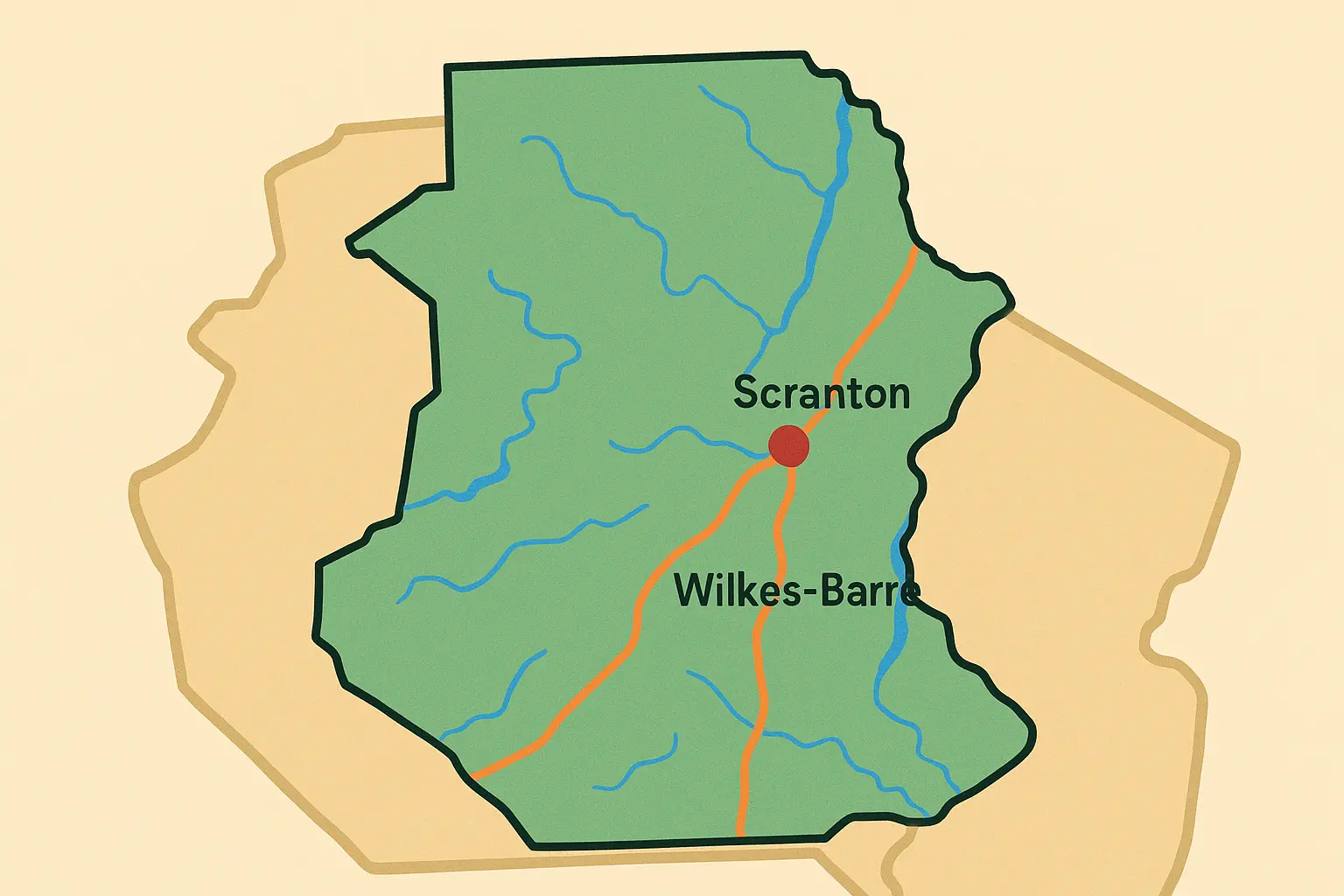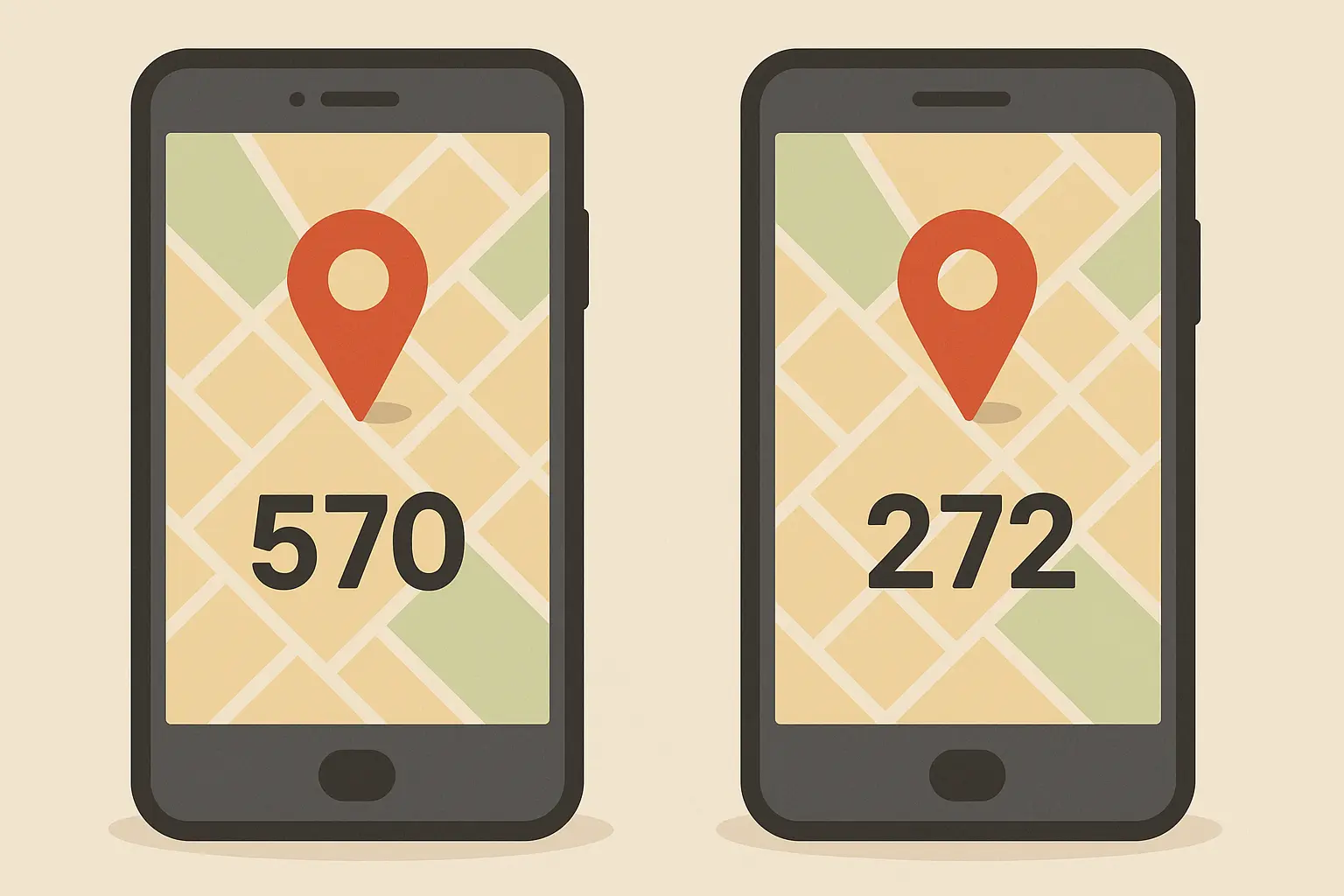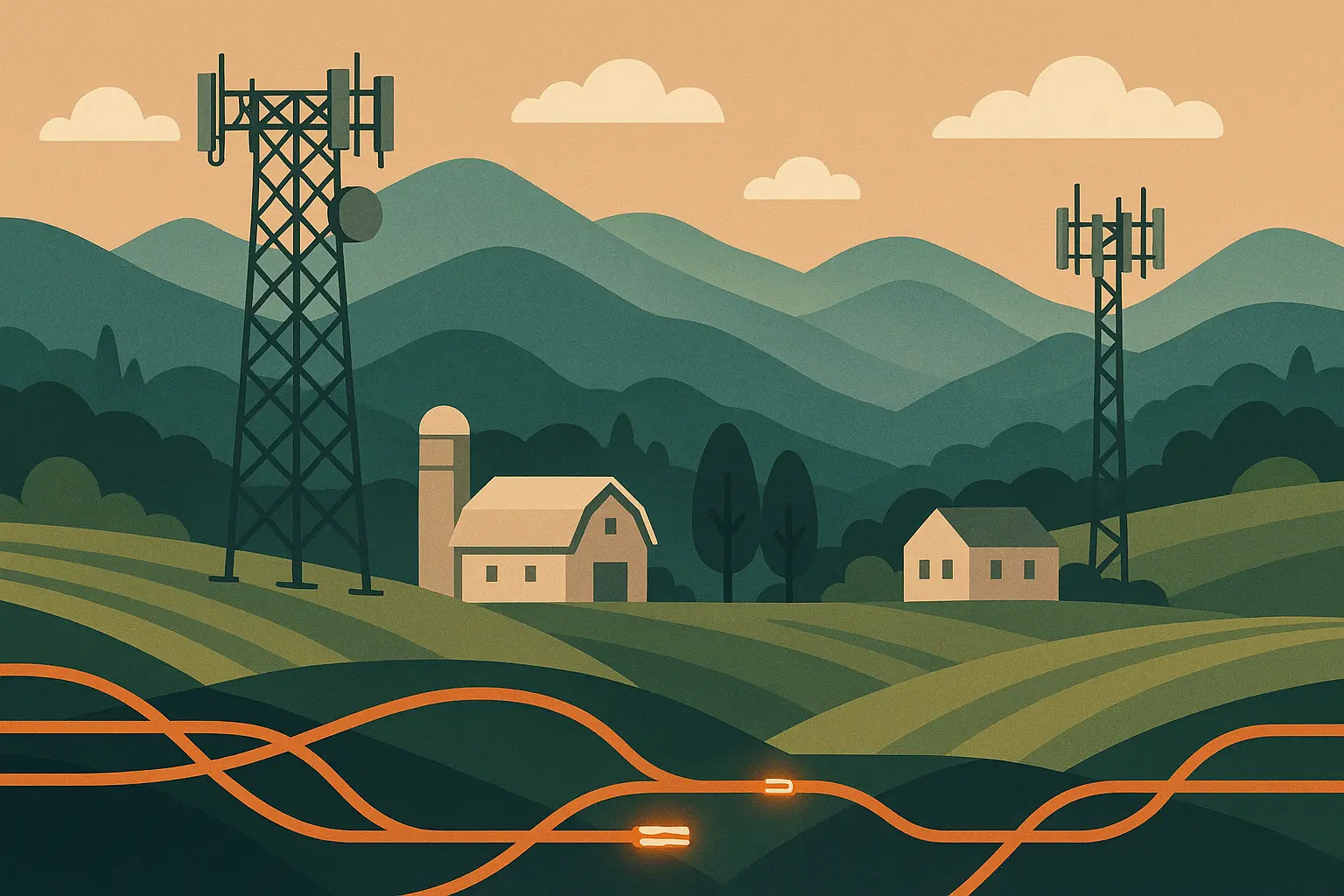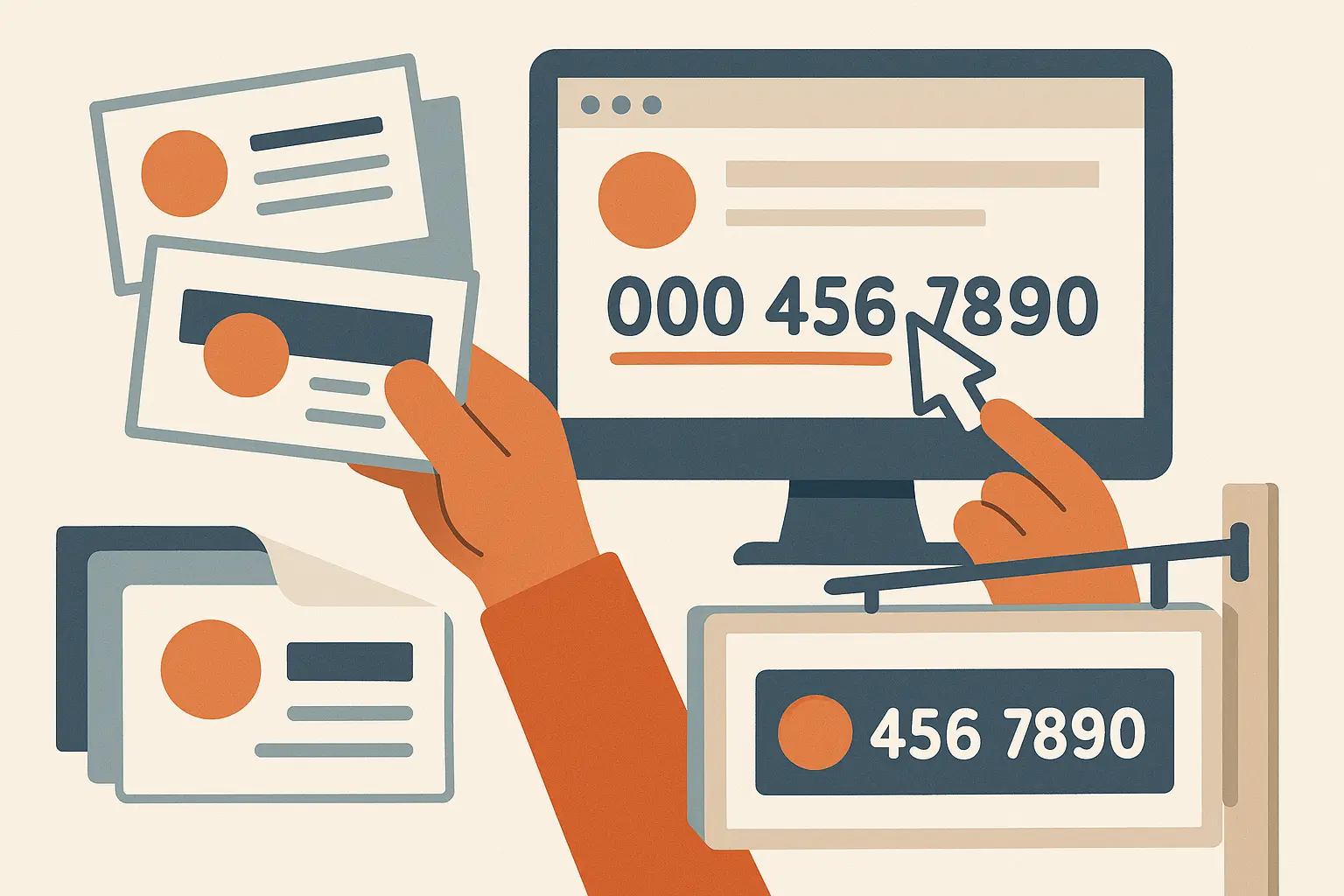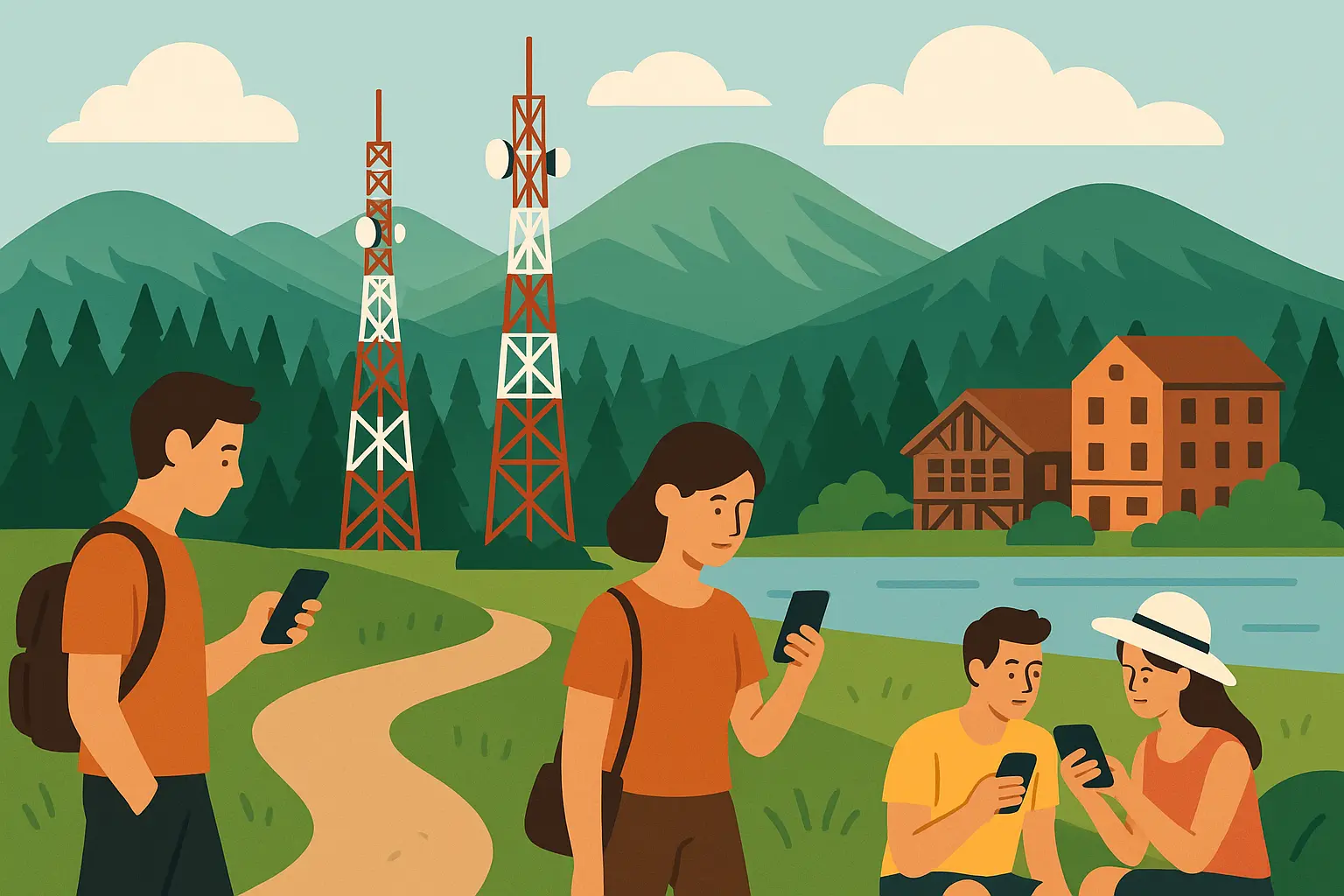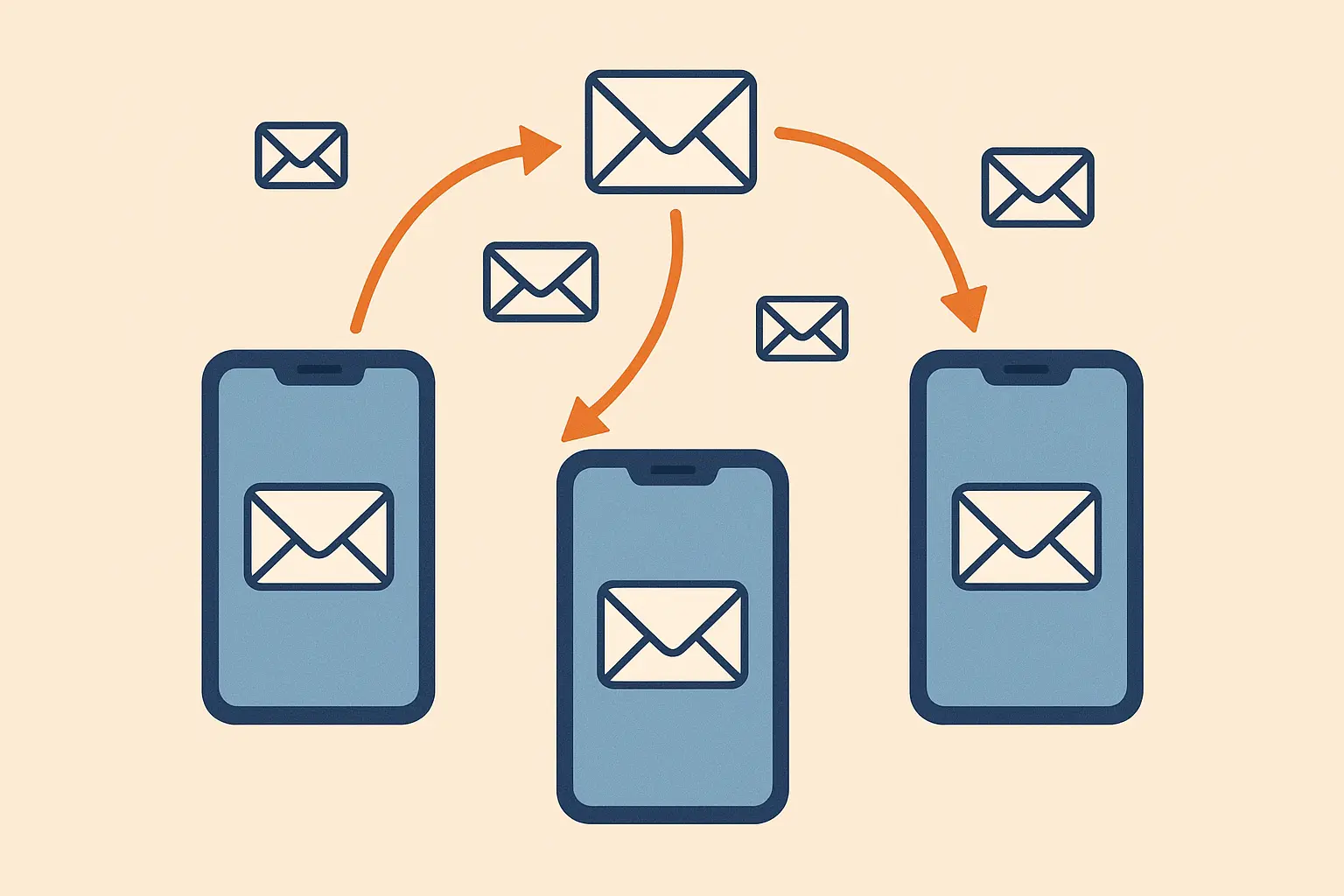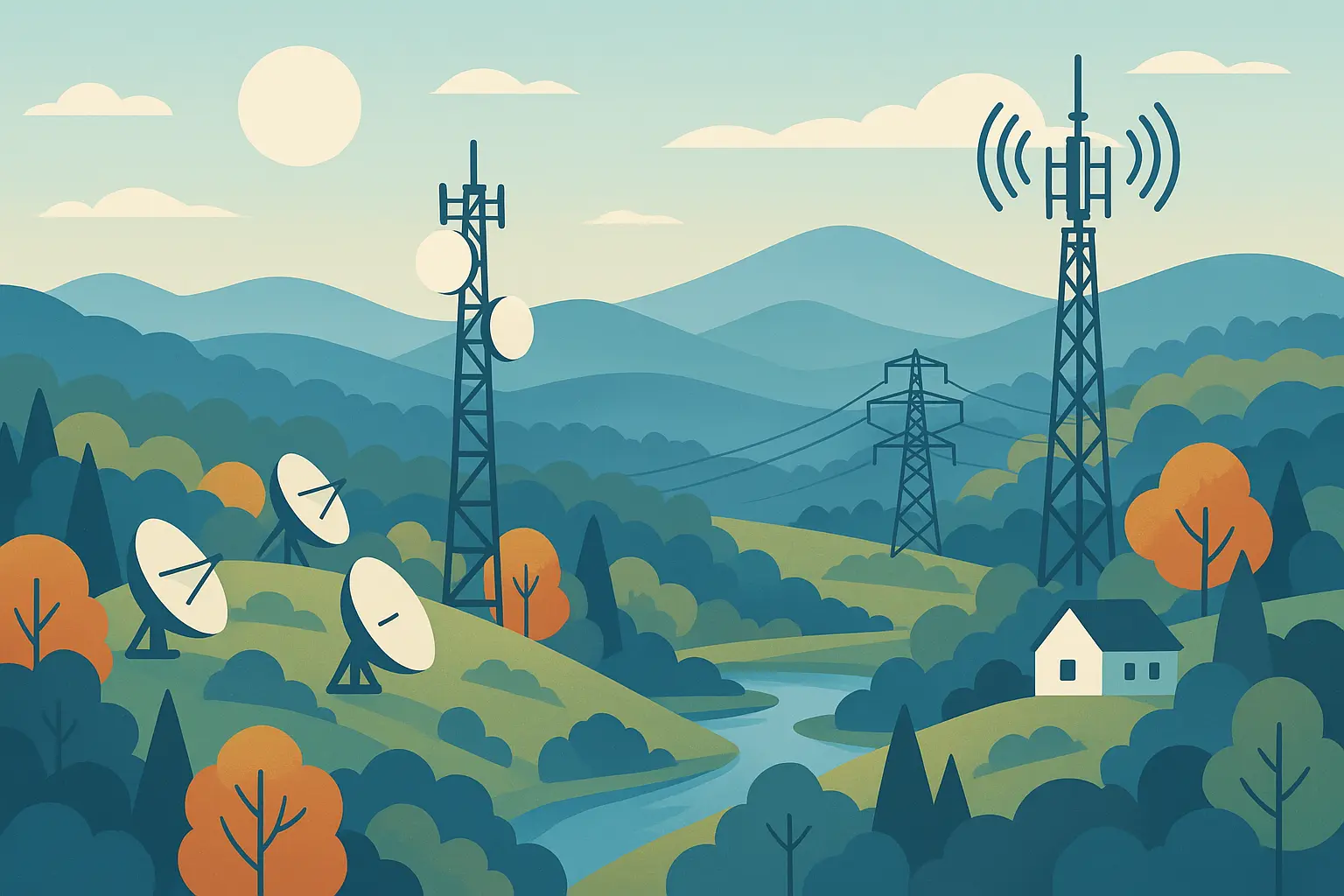If you live in northeastern Pennsylvania, you’ve probably noticed some confusing changes to how phone numbers work around here. Maybe you tried calling your neighbor with just seven digits and got that annoying recording. Or perhaps you got a new phone number with 272 instead of 570 and wondered if that means something different.
Here’s what’s actually happening and why it matters for your daily life. Whether you’re dealing with 10-digit dialing confusion or trying to understand why your neighbor got a different area code, I’ll walk you through the real-world implications of Pennsylvania’s telecommunications evolution. With over 1.5 million residents calling the 570 region home, understanding these changes has never been more critical for both personal and business communications.
According to ZipAtlas demographic data, the total population of Area Code 570 is 1,505,035 people, making it one of Pennsylvania’s most populous telecommunications regions.
Table of Contents
Table of Contents
-
What’s Really Happening with Your Phone Numbers
-
Where 570 Actually Reaches
-
Your Service Options (The Real Story)
-
How This All Started
-
Managing Your Numbers
-
Why This Matters for Your Community
-
Looking Ahead
Essential 570 Area Code Facts
-
The 570 area code covers northeastern Pennsylvania including Scranton, Wilkes-Barre, and the Pocono Mountains region
-
Area code 272 now overlays 570, meaning you must dial 10 digits for ALL calls (even local ones)
-
New phone numbers can be assigned either 570 or 272 – there’s no geographic difference between them
-
The change split from 717 in 1998 due to growing demand from population and business growth
-
Rural areas still face telecommunications challenges despite infrastructure improvements
-
Businesses had to update all marketing materials and systems for 10-digit dialing requirements
-
The area code has become part of regional identity and local business branding
What’s Really Happening with Your Phone Numbers
The 272 Overlay – Why Your Neighbor Has a Different Area Code
So here’s the deal with 272 – it’s not a new region, it’s just more phone numbers for the same places. Your friend in Scranton might get a 272 number while you keep your 570, but you’re both still in Scranton. It’s like having two different colored license plates in the same state.
The real pain? You now have to dial all 10 digits for every call, even to your next-door neighbor. I know, I know – after decades of dialing seven digits locally, this feels unnecessary. But there’s no going back.
Quick reality check:
-
All new numbers are randomly assigned 570 or 272
-
No difference in service or location
-
10-digit dialing is mandatory for everything
-
Your old 570 number isn’t going anywhere
The rollout of 272 didn’t happen overnight – it followed a carefully planned timeline designed to minimize disruption. However, the real-world impact was still significant for businesses and residents who had to adapt their systems, update their marketing materials, and retrain their habits around dialing procedures.
Local businesses faced the biggest challenges during this transition. They had to update phone systems, reprogram auto-dialers, modify websites, replace business cards, and update all advertising materials. Small businesses particularly struggled with these costs, especially when they’d just invested in new marketing materials featuring their 570 numbers.
10-Digit Dialing Checklist:
-
Update all stored contacts in your phone
-
Reprogram speed dial numbers
-
Update business phone systems
-
Modify auto-dialing equipment
-
Train employees on new dialing procedures
-
Update emergency contact lists
-
Modify alarm system contacts
Getting New Service – What to Expect
When you sign up for new phone service, don’t be surprised if you get 272 instead of 570. There’s no way to request a specific area code, and honestly, most people don’t care once they get used to it.
The bigger issue is making sure your phone system can handle the change. If you run a business, check that your phone system, alarm contacts, and any auto-dialing equipment work with 10-digit dialing.
When you get a new phone line, you might receive either a 570 or 272 area code depending on what’s available. There’s no difference in service quality or geographic coverage between the two. Many businesses worried unnecessarily about getting a 272 number instead of 570, but customers don’t really care.
Where 570 Actually Reaches
The Real Service Territory
When I tell people about the 570 coverage, they’re often surprised by just how much ground it covers. We’re talking about a massive chunk of northeastern Pennsylvania that stretches from the New York border down toward the Lehigh Valley. The coverage includes major urban centers like Scranton and Wilkes-Barre, but it also encompasses rural mountain communities, Pocono resort areas, and everything in between.
Understanding these boundaries matters because it affects everything from your phone bill to business operations. For businesses operating across multiple locations within the coverage area, implementing reliable communication systems becomes crucial, especially when dealing with text message forwarding to email addresses for consistent customer service across diverse geographic regions.
|
County |
Major Cities |
Population Density |
Service Quality |
|---|---|---|---|
|
Lackawanna |
Scranton, Dunmore |
High |
Excellent |
|
Luzerne |
Wilkes-Barre, Hazleton |
High |
Excellent |
|
Monroe |
Stroudsburg, East Stroudsburg |
Medium |
Good |
|
Pike |
Milford, Hawley |
Low |
Fair |
|
Wayne |
Honesdale, Waymart |
Low |
Fair |
|
Carbon |
Jim Thorpe, Palmerton |
Low |
Good |
|
Wyoming |
Tunkhannock |
Low |
Fair |
|
Susquehanna |
Montrose |
Low |
Fair |
Major Cities and Regional Character
Scranton and Wilkes-Barre anchor the region as the primary metropolitan areas, but don’t overlook cities like Williamsport, Hazleton, and the numerous Pocono Mountain communities. Each of these areas brings different telecommunications needs and challenges.
Scranton’s urban infrastructure supports robust service options, while smaller communities might struggle with limited carrier choices or coverage gaps. If you run a business in downtown Scranton, you’ll have access to multiple fiber internet providers, competitive pricing, and redundant service options. However, if you operate the same type of business in a rural area of Pike County, you might be limited to a single DSL provider with slower speeds and higher costs.
The 570 boundaries span across Lackawanna, Luzerne, Lycoming, Carbon, Monroe, Pike, Wayne, Susquehanna, Wyoming, and Bradford counties. Each county has its own personality when it comes to telecommunications infrastructure. Monroe County (thanks to the Poconos) has decent coverage due to tourism demands, while some rural parts of Bradford County still deal with spotty service.
Your ZIP code works together with the area code to pinpoint your exact location within this sprawling region. This integration becomes crucial when you’re dealing with service providers, emergency services, or business deliveries. Some ZIP codes span multiple townships, which can create confusion when determining service availability or coverage quality.
The northern boundary extends toward New York state, covering rural communities in Susquehanna and Bradford counties. These areas often face the biggest telecommunications challenges due to sparse population density and difficult terrain. Moving south, the boundary approaches the more developed Lehigh Valley region, while the eastern edge includes popular Pocono destinations near New Jersey. The western boundary encompasses Lycoming County and surrounding areas, including Williamsport.
Your Service Options (The Real Story)
Who Actually Serves This Area
Let’s be honest about internet and phone service in northeastern PA – it’s a mixed bag. In downtown Scranton or Wilkes-Barre? You’ve got options. Out in the mountains or rural areas? Good luck.
The region shows strong workforce participation with 58.0% of people in the labor force and an unemployment rate of 6.3%, indicating a robust economy that depends heavily on reliable telecommunications infrastructure.
Urban areas (Scranton, Wilkes-Barre):
-
Comcast dominates with decent speeds
-
Verizon Fios in some neighborhoods
-
Service Electric (local company, surprisingly good customer service)
Suburban/Pocono areas:
-
Mix of cable and DSL options
-
Coverage depends heavily on your exact location
-
Tourist areas tend to have better service
Rural areas:
-
Often limited to one provider
-
Speeds can be painfully slow
-
Cell coverage gets spotty in valleys and mountains
|
Provider Type |
Coverage Area |
Typical Speeds |
Best For |
|---|---|---|---|
|
Verizon |
Region-wide |
Up to 1 Gig |
Rural reliability |
|
Comcast |
Urban/Suburban |
Up to 1.2 Gig |
High-speed urban |
|
Service Electric |
Select areas |
Up to 1 Gig |
Local customer service |
|
T-Mobile |
Region-wide |
5G varies |
Mobile-first users |
|
AT&T |
Region-wide |
Up to 1 Gig |
Business services |
|
Local Co-ops |
Rural specific |
25-100 Mbps |
Community-focused |
Verizon, AT&T, and T-Mobile dominate the market, but their coverage quality varies dramatically across the region. Verizon typically offers the most reliable rural coverage, while T-Mobile has been aggressively expanding their network. AT&T falls somewhere in the middle. Regional providers like Service Electric or local cooperatives sometimes offer better customer service and competitive pricing for specific areas.
The Mountain Problem
If you live in the more remote parts of the 570 region, you know the struggle. Mountains block cell signals, population density is too low for companies to invest in infrastructure, and you might still be stuck with DSL speeds that barely handle video calls.
Some areas are getting better with recent federal broadband investments, but don’t hold your breath if you’re in a really remote spot. Mountainous terrain, sparse population density, and infrastructure costs create real challenges. Some areas still rely on older copper lines for internet service, while cell coverage can be spotty or non-existent in valleys and heavily forested areas.
The 570 region has experienced significant technological advancement over the past decade, though the pace of change varies considerably by location. Urban areas like Scranton have access to cutting-edge fiber networks, while some rural communities are still waiting for basic broadband improvements.
Major infrastructure investments have brought high-speed fiber to many communities, dramatically improving internet speeds and reliability. However, the expansion has been uneven – downtown Scranton might have gigabit fiber while a community 20 miles away still relies on DSL.
How This All Started
The Split from 717
Back in 1998, northeastern Pennsylvania got kicked out of the 717 area code (which stayed with Harrisburg and south-central PA). Why? Simple – we ran out of phone numbers.
This wasn’t just about more people moving here. Suddenly everyone needed multiple phone lines – home phone, work phone, fax machine, dial-up internet. The Poconos were booming with development. Businesses were growing. The math just didn’t work anymore with one area code.
The cultural significance of the area code continues today, with “570 Day” being celebrated annually on May 7th (5/7) in Wilkes-Barre and across the region, as proclaimed by Mayor George Brown, highlighting how the area code has become part of local identity and community pride.
Before 1998, northeastern Pennsylvania shared the 717 area code with south-central Pennsylvania, including cities like Harrisburg and Lancaster. This arrangement worked fine when phone numbers were primarily used for landlines, but the explosion of mobile phones, fax machines, and dial-up internet connections created a shortage of available numbers.
The split made sense geographically too. Scranton has more in common with New York than Harrisburg anyway. Several factors drove the demand for more phone numbers in the region. The Pocono Mountains experienced significant development as a vacation and retirement destination. Scranton and Wilkes-Barre saw business growth, particularly in healthcare and education sectors. Additionally, the proliferation of personal devices meant families needed multiple phone lines where they previously had just one.
Managing Your Numbers
Keeping Your Number When You Switch
Want to change carriers but keep your 570 number? You can, but don’t cancel your old service until the transfer is complete. I’ve seen people lose their numbers by being too eager to cut ties with their old provider.
The process usually takes a few days for cell phones, up to a week for landlines. Just be patient and don’t mess with anything until your new carrier confirms everything’s working.
Switching carriers while keeping your number typically takes 1-3 business days for wireless numbers and up to a week for landlines. The process involves coordination between your old and new providers, and you’ll want to avoid canceling your old service before the transfer is complete.
Sarah from Scranton wanted to switch from Verizon to T-Mobile but keep her 570 number. She initiated the port on Monday, received confirmation Tuesday, and had full service with her new carrier by Wednesday evening. The key was not canceling her Verizon service until T-Mobile confirmed the transfer was complete.
Number Porting Checklist:
-
Research new provider coverage in your area
-
Gather account information from current provider
-
Initiate port request with new provider
-
Keep current service active during transfer
-
Test new service before canceling old service
-
Update contacts with new carrier information
-
Verify billing changes take effect
You can generally port your number within the same rate center, but moving significant distances within the region might require a new number assignment. This depends on the technical infrastructure and how the carriers have organized their service areas. Rural moves are more likely to require new numbers than urban relocations.
Business Considerations
The switch to 10-digit dialing hit local businesses hard. Everything had to be updated – websites, business cards, truck lettering, advertising. Small businesses especially felt the pinch of unexpected costs. If you’re running a business, make sure your phone system can handle both 570 and 272 numbers seamlessly. Some older systems struggled with the change and needed expensive upgrades.
Local businesses continue embracing the 570 identity, as seen with the “Electric City Music Conference featuring acts from the 570 area code” in Scranton, where organizers deliberately chose performers from the region to celebrate local talent and foster networking opportunities.
For businesses managing multiple communication channels, understanding how to forward text messages on Android phones becomes essential when coordinating customer service across different devices and locations within the region.
Companies must maintain accurate records of customer phone numbers and ensure their systems can handle both 570 and 272 area codes seamlessly. This includes updating CRM systems, billing software, and automated calling systems. Some businesses discovered their older systems couldn’t handle the changes without expensive upgrades.
Businesses with multiple locations across the 570 region face additional complexity in managing communications systems. Different locations might have different service providers, varying infrastructure quality, and distinct local calling patterns. Coordinating phone systems, internet connectivity, and mobile device management across these variables requires careful planning.
A regional healthcare network with offices in Scranton, Wilkes-Barre, and rural Pike County had to implement three different communication strategies: fiber-based VoIP in urban locations, hybrid copper-fiber systems in suburban areas, and satellite backup systems for rural clinics to ensure consistent patient care coordination.
Why This Matters for Your Community
The 570 area code has become part of who we are up here. You see it in business names, local merchandise, social media. May 7th is even “570 Day” in some places.
This regional identity isn’t just feel-good stuff – it affects the local economy. Businesses use “570” in their marketing to emphasize local roots. People feel connected to their area code in a way that’s pretty unique.
The region’s economic diversity is reflected in its workforce, with median household income of $66,539 and families earning a median income of $80,626, supporting a range of industries that depend on reliable telecommunications infrastructure.
Local sectors that depend on good phone service:
-
Healthcare systems (Geisinger, Commonwealth Health)
-
Tourism in the Poconos
-
Distribution and logistics companies
-
Small manufacturers
Each industry has different needs, which explains why some areas get better infrastructure investment than others.
Major hospital networks like Geisinger and Commonwealth Health require extremely reliable communications for patient care coordination, emergency services, and administrative functions. These healthcare systems often invest in redundant communication systems and have been early adopters of new technologies. Their influence has helped drive infrastructure improvements in areas they serve.
The Pocono Mountains tourism industry relies heavily on telecommunications for reservations, customer service, and marketing to visitors from major metropolitan areas. Resort operators and hospitality businesses need reliable internet for booking systems and mobile coverage for guest services. Tourism demands have actually helped improve infrastructure in some otherwise rural areas.
Industrial operations throughout the region depend on robust communication systems for supply chain management, logistics coordination, and workforce communications. Manufacturing facilities often require specialized telecommunications solutions for their operations, and distribution centers need reliable connectivity for inventory management and shipping coordination.
Many companies incorporate “570” into their business names, websites, or marketing materials as a way to emphasize their local roots and community connection. You’ll see businesses like “570 Pizza,” “570 Auto Repair,” or marketing campaigns that play on the area code. This branding strategy helps businesses connect with customers who value supporting local enterprises.
The area code serves as a symbol of regional pride and identity, particularly in communities that value their distinct northeastern Pennsylvania heritage. Social media hashtags, local merchandise, and community events often reference 570 as a way to celebrate regional identity. This cultural significance has made some residents protective of their 570 numbers, even when 272 numbers work exactly the same way.
Managing communications across the diverse 570 region presents unique challenges. Whether you’re running a business with locations scattered across urban Scranton and rural Bradford County, or you’re trying to stay connected while traveling through areas with spotty cell coverage, reliable communication solutions become essential.
Getting started is simple with Auto Forward SMS for first-time users, and businesses can integrate messages into their workflow by forwarding texts to Slack channels for team coordination across multiple 570 area locations.
Looking Ahead
The 570 region keeps evolving. Infrastructure is slowly improving, especially in areas that can justify the investment. 5G is rolling out in urban areas, though rural coverage will take years.
The overlay system with 272 is working, even if it took some getting used to. Most people have adapted to 10-digit dialing, and businesses have updated their systems.
Mobile carriers continue expanding 5G coverage throughout the region, but don’t expect uniform availability anytime soon. Urban centers like Scranton and Wilkes-Barre have decent 5G coverage, while rural areas may wait years for deployment. The mountainous terrain also creates challenges for 5G signals, which don’t travel as far as older cellular technologies.
Bottom line: Don’t overthink it. Find a provider that works reliably in your specific location, get used to dialing 10 digits, and remember that whether you have 570 or 272, you’re still part of the same northeastern Pennsylvania community.
The area code changes reflect growth and modernization – not perfect, but moving in the right direction. Focus on getting service that meets your needs rather than worrying about which three digits start your phone number.
For those dealing with communication challenges across the varied terrain and infrastructure of the region, solutions like forwarding text messages to API endpoints can help maintain business continuity and customer service standards regardless of location-specific limitations.
Most importantly, don’t overthink the technical details. Focus on finding reliable service that meets your specific needs, whether that’s basic phone service for your home, robust business communications, or advanced solutions that keep you connected across this beautiful but challenging region of Pennsylvania.

